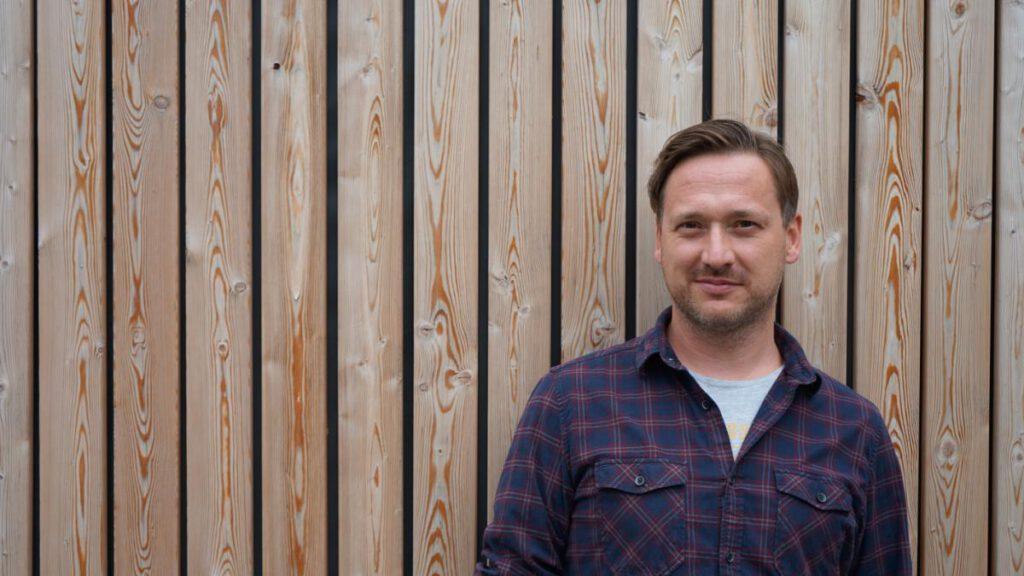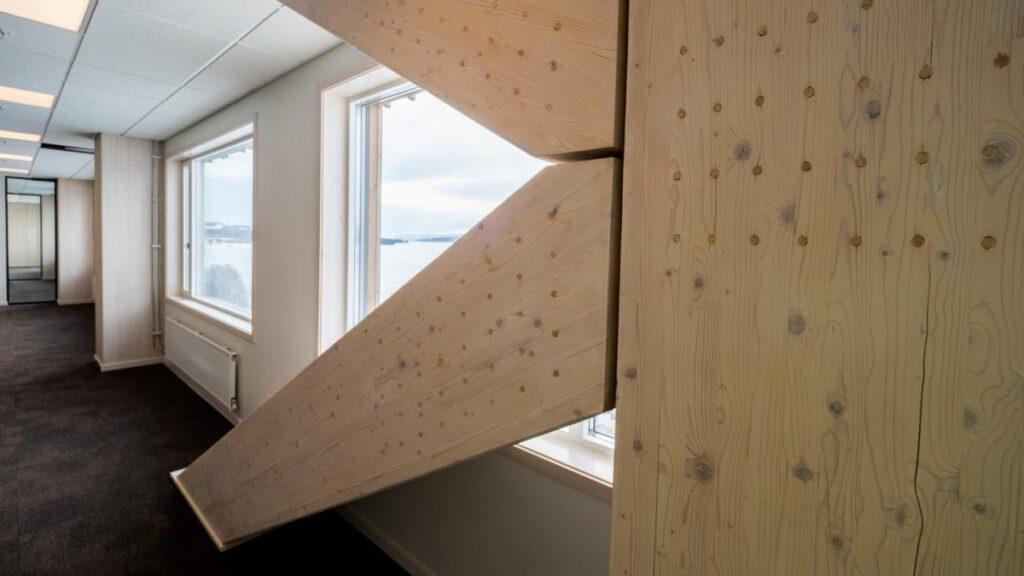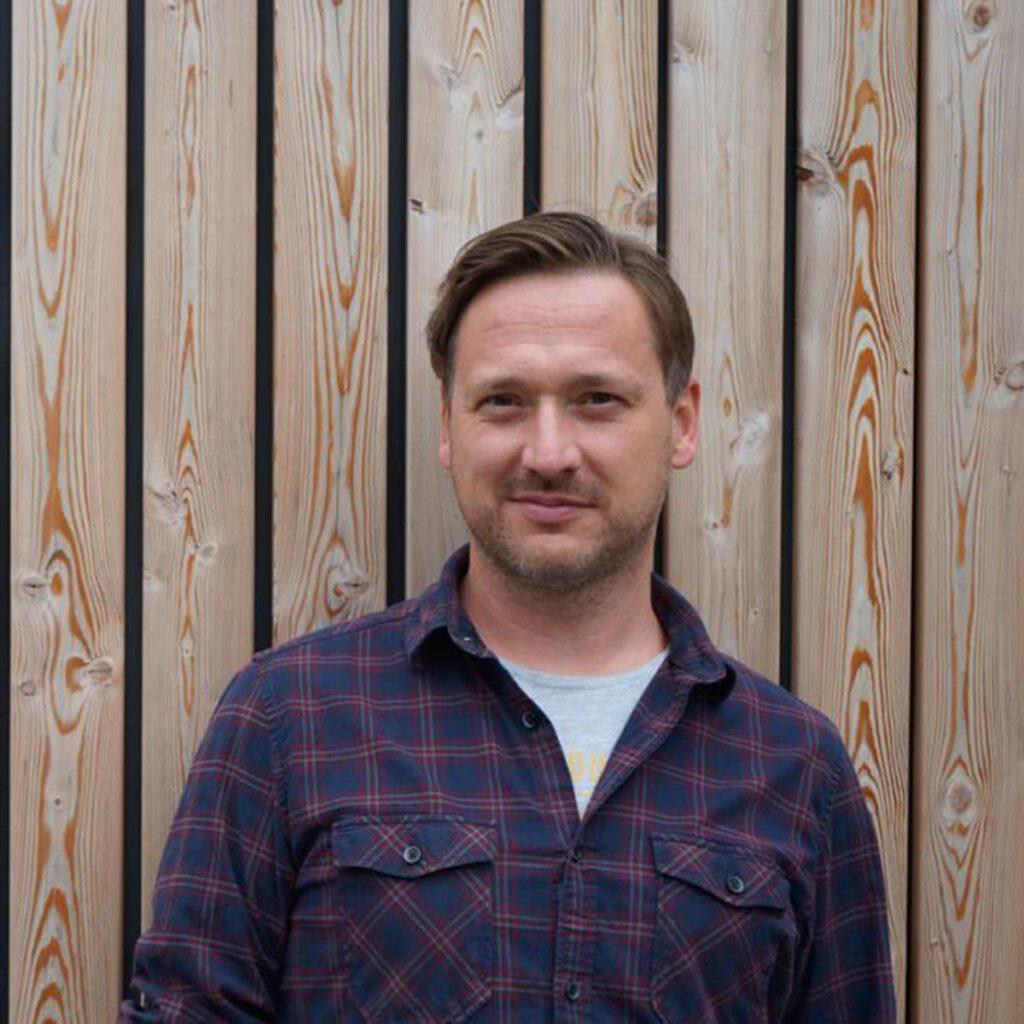“Smart means something is communicating with me”
Alan Hofmann is a building engineer and timber constructor from Austria. His company Woodplan occupies a digital niche for building projects around the world. In this interview he describes his interpretation of intelligent offices, and how an office can be smart in an old Austrian building.
Woodplan is an extremely well-connected company. Based in Austria, the office serves as a hub for planning, developing and realizing timber structures. It communicates with the various players in a project, as a bridge between architects, structural engineers, building contractors and construction companies. Its services range from digital replicas of actual buildings through to the bespoke delivery of material, complete with individual QR code.
Tall and smart
The majority of Woodplan’s customers are in Scandinavia, where multi-level timber office buildings have become an everyday sight. For example, Woodplan CEO Alan Hofmann explains that his Norwegian business partner Woodcon has fitted out a state-of-the-art smart office in the world’s tallest timber high-rise. In contrast, Hofmann and his nine colleagues work in an old building with high ceilings to the south of Austria, in central Graz. But that has its advantages as well, as he reports.
How can timber be used for smart purposes in buildings and specifically in offices?
Alan Hofmann: Well, the first thing we have to do is define exactly what we mean by “smart”. In my view, it means that something is intelligent and interactive. Something that is communicating with me. A construction material like wood isn’t digital in itself, but it can “interact” with me and have a beneficial effect on my behaviour as a user. After all, a smart office is all about supporting employees and enabling them to become more satisfied, more productive, and better fit for their work. And so a sustainable raw material such as wood has a lot of benefits in this area.
What are these benefits?
Alan Hofmann: Wood in itself is a very intelligent building material. Nature certainly had the right idea! There is a scientific study where wood was proven to lower the heart rate. Just to give you a brief description, two classrooms at a school in Styria were equipped with solid wood specifically for the study. When the children in these two classes were compared with two other classes of children who were taught in rooms without this kind of wood, the study showed that their pulse rates were lower and also that their grades were better. A fascinating short documentary by the BBC on Norwegian schools made of timber is also available.
What are the other advantages of wood in everyday working life?
Alan Hofmann: Its haptics are so gratifying. Wood gives me a good feeling when I touch it, and it looks good as well. What’s more, by making wood visible in a room, I can lower the operative room temperature by about one degree Celsius compared to when mineral building materials are used. This is because a concrete wall, or a brick wall covered in plaster, always feels a bit cold. But with wood, I have the feeling that it is warm and doesn’t drain the warmth out of me all the time. And so I can lower the heating by a degree. Besides this, wood is able to breathe: it absorbs moisture and releases it again.
There is a scientific study where wood was proven to lower the heart rate.
Alan Hofmann, timber constructor
And it is good for the climate as well.
Alan Hofmann: We all know that wood stores and reduces CO2. So we have to make greater use of such building materials in order to reach the climate goals. And it is the only raw material that grows back quickly. Provided that people treat it as sustainably as in Austria, of course. Calculations have shown that one cubic metre of wood grows back every second, and we need about 40 cubic metres for a timber family home. Also, wood is available almost everywhere in Austria, and so it doesn’t have to be transported for long distances. It can be easily recycled as well. In fact, now we even make a digital record of all wooden parts and resources used, such as screws. This will make our data relevant for recycling in 50 to 100 years’ time when a building has reached the end of its lifetime.
What exactly is the main focus of activity in your office?
Alan Hofmann: We are the interface between the architect, construction physicist, structural engineer, building contractor and construction company. Like a black box, we store all information and create a digital replica of the actual building. Our work is limited to timber construction and production of the building shell. We plan the required timber elements and arrange for them to be made ready for production. Timber is excellently suitable for preassembly, and can be precision-cut using modern CNC cutting machines (ed.: CNC = Computerized Numerical Control).
Which means you don’t have to travel to building sites yourself?
Alan Hofmann: That’s right, many of our projects are in Norway, where our partner Woodcon is based. Incidentally, “con” stands for construction. We are Woodplan – the planners. One of the things we do is number each timber part to specify the order in which they must be put on the transporter. This really helps the site manager, considering that the transporter arrives with 50 or 100 pieces of timber weighing tonnes. And each timber element also has its own QR code that can be scanned with a smartphone. This shows precisely where each part needs to go. Also, the crane operator sees on the display what element belongs in what place.
All this is realized by you and your team of nine people at your office in the centre of Graz. To what extent can an old Austrian building with high ceilings really be called smart?
Alan Hofmann: The building itself is about 150 years old and so its lifetime-CO2 ratio is already very smart, for instance. As an expanding company, we chose this building primarily because we had enough room. In Graz there is unfortunately only a limited number of timber buildings that offer comparable office space. And an old building with its high ceilings also has a lot of flair and charm, which raises general satisfaction.
Are very old buildings better than their reputation?
Alan Hofmann: Definitely. Our office has an incredible indoor climate because the air in rooms with 3.5-metre ceilings never stands still, it is constantly circulating. Also, the thick exterior walls perform well when it is hot outside in the summer, as they don’t heat up as quickly. Of course, I would like an old building to be more energy efficient. And I would like us to make use of climate technologies to heat the rooms in the winter.
Alan Hofmann established Woodplan GmbH in 2015. He specializes in the development and realization of timber construction projects. One of which was the world’s tallest timber building, which is in Norway.
An old building with its high ceilings also has a lot of flair and charm, which raises general satisfaction.
Alan Hofmann, construction engineer
Also because the old Austrian box-type windows let the warmth escape?
Alan Hofmann: It’s true that the Austrian box-type windows are not up-to-date as far as energy is concerned. But they do protect against mould because there is always natural ventilation in the rooms. Modern buildings are now imitating the effect of these box windows. We have to add ventilation because our buildings are so airtight. In some cases, we even have to integrate tiny ventilation slits into the windows to let out the moisture from cooking, breathing, etc. Even in state-of-the-art timber buildings, we can’t do entirely without ventilation systems.
Are the cables in an old building powerful enough for the computing capacity required for your building projects?
Alan Hofmann: As far as communication is concerned, we no longer need these complicated, permanent data lines. Nowadays, it all works perfectly using WLAN and 5G networks. And why should I install these kind of smart facilities if we don’t use them anyway because other solutions eliminated the need long ago? I am far more concerned about the flair, indoor climate and office space raising employee satisfaction and well-being. Although I must say that nowadays these high ceilings in old Austrian buildings simply aren’t affordable any longer. Which means we definitely have to produce smart buildings.
You worked on a very special smart project – the tallest timber building in the world, in Norway’s Brumunddal.
Alan Hofmann: Yes, exactly. It is 85 metres high and accommodates offices, apartments and a hotel. Together with Woodcon, we were responsible for circulation elements. This means we built three elevator shafts and two stairwells. In general, the whole thing was built in different phases of two storeys each. The circulation elements were built first, followed by the remainder of the building. For a total of 18 storeys.
In what respect was this project pioneering?
Alan Hofmann: It is proof of how diverse a timber building can be. Because the building is definitely smart in terms of the various kinds of user behaviour – with offices, the hotel and apartments. Woodcon has its office there too; it is networked and digital throughout. For instance, the entire climate structure works automatically, like when the blinds close. Everything really serves one purpose there: to optimize the working, room and climate conditions. It is a building at the very highest level.
Another of your projects is the ZEB Lab in Trondheim. ZEB stands for “zero emission buildings”. What is its purpose?
Alan Hofmann: The ZEB Lab is a combination of office building and laboratory. The aim of the research there is to find sustainable and emissions-free solutions for “the buildings of tomorrow”. For example, the ZEB Lab itself uses less energy than it produces – including all materials and resources that were used to construct the building.
What was your responsibility there?
Alan Hofmann: We planned the timber construction using a 3D model, and Woodcon then assembled it. The curved timber stairs were a special technical highlight: using a special cutting technique, we were able to bend the straight timber elements as required. The pictures will give you a better impression of how this happened.
What timber elements would you like in your own office?
Alan Hofmann: All our office desks are made of solid wood. But I would also like a climbing wall made of wood, with wooden grips. By way of a change to everyday office life and to enable people to think differently. Google and co. are already doing that. And I would like to use more wood in our day-to-day work: for example, hanging up a map carved out of wood, or using wooden cutlery. I’d just like to explore different sides to the material with which I work.
Interview: Martin Obermayr
Translation: Rosemary Bridger-Lippe
Images: Woodcon, Woodplan/Alan Hofmann, Moelven




